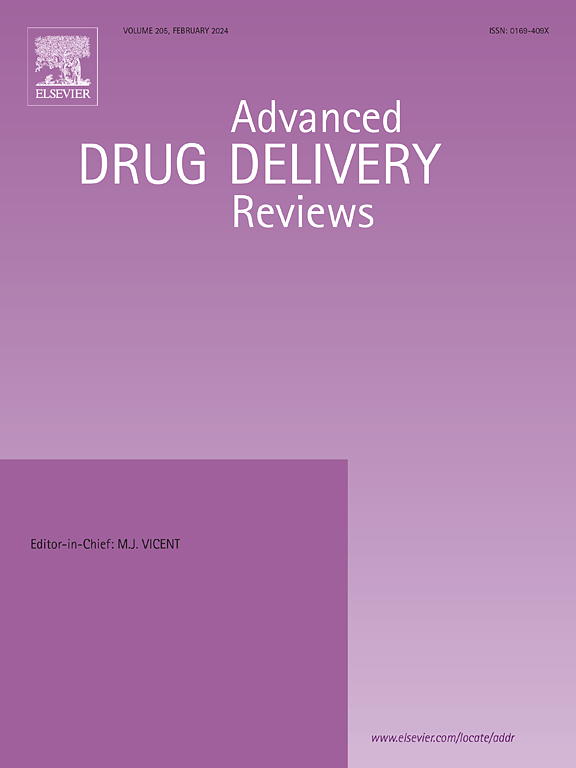Human pluripotent stem cell-based cardiac repair: Lessons learned and challenges ahead
IF 17.6
1区 医学
Q1 PHARMACOLOGY & PHARMACY
引用次数: 0
Abstract
The transplantation of human pluripotent stem cell-derived cardiomyocytes (hPSC-CMs) and hPSC-derived cardiac progenitors (hPSC-CPs) represents a promising strategy for regenerating hearts damaged by myocardial infarction (MI). After nearly two decades of experience testing these cell populations in various small- and large-animal MI models, multiple clinical trials have recently been initiated. In this review, we consider the principal lessons learned from preclinical experience with hPSC-CMs and -CPs, focusing on three conclusions that have been supported by the majority of reported transplantation studies. First, hPSC-CMs and -CPs stably engraft in injured hearts and partially remuscularize the infarct scar, but more progress is needed to improve graft cell retention and survival. Second, the transplantation of hPSC-CMs and -CPs has been found to improve contractile function in infarcted hearts, but the mechanistic basis for these effects remains incompletely elucidated. Third, the graft tissue formed by these cells can integrate and activate synchronously with host myocardium, but this capacity for electromechanical integration has been associated with an elevated risk of graft-related arrhythmias. Here, we summarize the preclinical evidence supporting these three observations, identify the relevant gaps and barriers to translation, and summarize ongoing efforts to improve the safety and efficacy of hPSC-CM- and -CP-based regenerative therapies.


基于人类多能干细胞的心脏修复:经验教训和未来挑战
人多能干细胞来源的心肌细胞(hPSC-CMs)和hpsc来源的心脏祖细胞(hPSC-CPs)的移植是心肌梗死(MI)损伤心脏再生的一种有前途的策略。经过近二十年在各种小型和大型动物心肌梗死模型中测试这些细胞群的经验,最近启动了多项临床试验。在这篇综述中,我们考虑了从hPSC-CMs和- CPs的临床前经验中吸取的主要教训,重点关注了大多数移植研究报道支持的三个结论。首先,hPSC-CMs和- CPs稳定地移植到损伤的心脏中,并使梗死疤痕部分再肌化,但需要更多的进展来改善移植物细胞的保留和存活。其次,hPSC-CMs和- CPs移植已被发现可以改善梗死心脏的收缩功能,但这些作用的机制基础仍未完全阐明。第三,由这些细胞形成的移植物组织可以与宿主心肌同步整合和激活,但这种机电一体化能力与移植物相关心律失常的风险增加有关。在这里,我们总结了支持这三个观察结果的临床前证据,确定了相关的差距和转化障碍,并总结了正在进行的提高基于hPSC-CM和- cp的再生疗法的安全性和有效性的努力。
本文章由计算机程序翻译,如有差异,请以英文原文为准。
求助全文
约1分钟内获得全文
求助全文
来源期刊
CiteScore
28.10
自引率
5.00%
发文量
294
审稿时长
15.1 weeks
期刊介绍:
The aim of the Journal is to provide a forum for the critical analysis of advanced drug and gene delivery systems and their applications in human and veterinary medicine. The Journal has a broad scope, covering the key issues for effective drug and gene delivery, from administration to site-specific delivery.
In general, the Journal publishes review articles in a Theme Issue format. Each Theme Issue provides a comprehensive and critical examination of current and emerging research on the design and development of advanced drug and gene delivery systems and their application to experimental and clinical therapeutics. The goal is to illustrate the pivotal role of a multidisciplinary approach to modern drug delivery, encompassing the application of sound biological and physicochemical principles to the engineering of drug delivery systems to meet the therapeutic need at hand. Importantly the Editorial Team of ADDR asks that the authors effectively window the extensive volume of literature, pick the important contributions and explain their importance, produce a forward looking identification of the challenges facing the field and produce a Conclusions section with expert recommendations to address the issues.

 求助内容:
求助内容: 应助结果提醒方式:
应助结果提醒方式:


